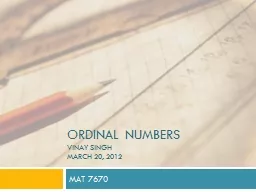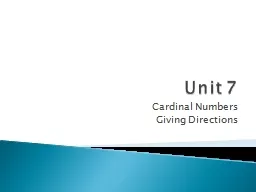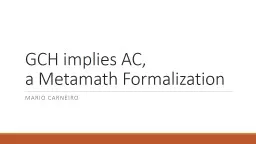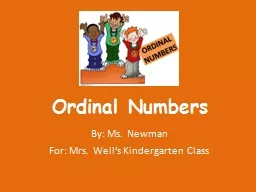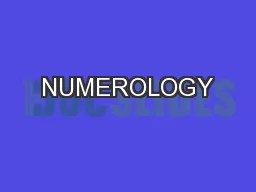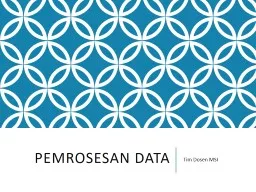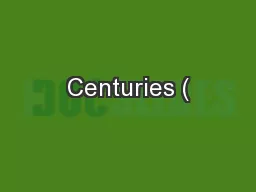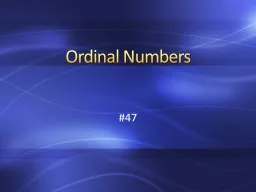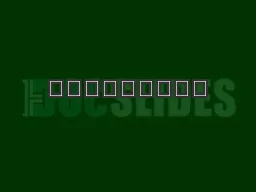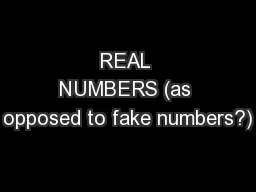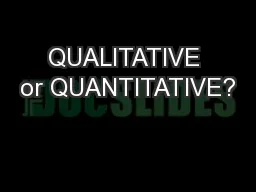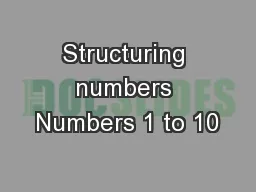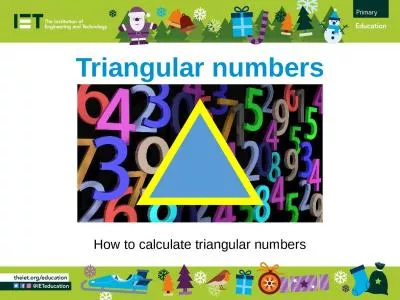PPT-Ordinal Numbers
Author : cheryl-pisano | Published Date : 2015-11-03
Vinay Singh MARCH 20 2012 MAT 7670 Introduction to Ordinal Numbers Ordinal Numbers Is an extension domain of Natural Numbers ℕ different from Integers ℤ and
Presentation Embed Code
Download Presentation
Download Presentation The PPT/PDF document "Ordinal Numbers" is the property of its rightful owner. Permission is granted to download and print the materials on this website for personal, non-commercial use only, and to display it on your personal computer provided you do not modify the materials and that you retain all copyright notices contained in the materials. By downloading content from our website, you accept the terms of this agreement.
Ordinal Numbers: Transcript
Download Rules Of Document
"Ordinal Numbers"The content belongs to its owner. You may download and print it for personal use, without modification, and keep all copyright notices. By downloading, you agree to these terms.
Related Documents

